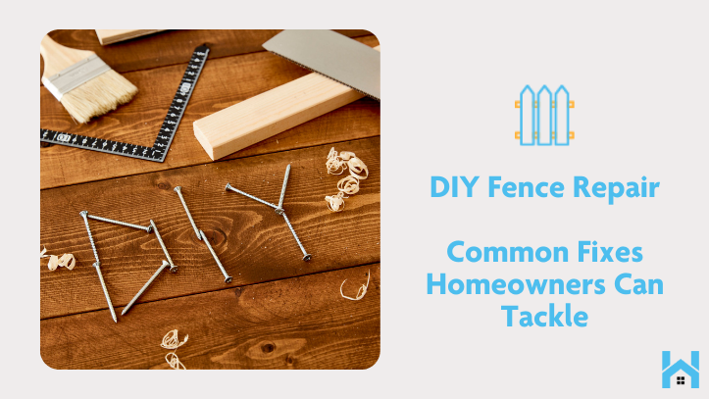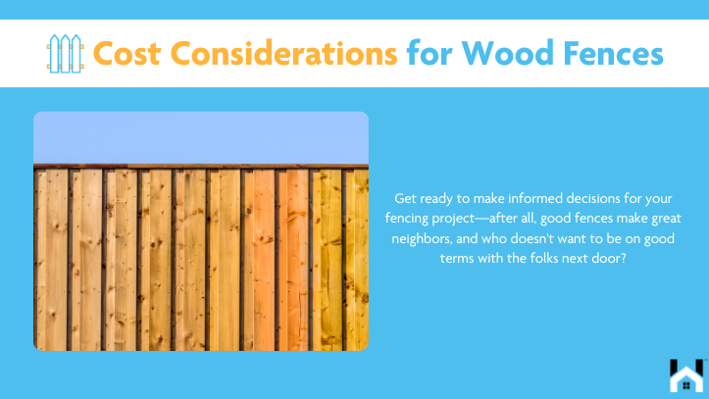Privacy, security, and aesthetic appeal – a wood privacy fence can provide all these benefits and more to homeowners. Not only does it delineate property boundaries and enhance curb appeal, but it also creates a private outdoor haven for families to enjoy. With various styles available, you can choose a fence that complements your home's architectural style and your personal taste. In this blog, we will explore the different types and styles of wood privacy fences suitable for residential installations.
The Classic Picket Fence
When we think of a traditional American home, often the image that comes to mind is that of a house with a white picket fence. This classic design, with its evenly spaced vertical boards or "pickets," is an icon of suburban charm. While not always the tallest option and thus not always providing complete privacy, the traditional picket fence can be modified with taller pickets and less space between them to add a level of seclusion while maintaining its quaint, timeless appeal.
Board-on-Board Fencing
A board-on-board fence is constructed with an overlapping pattern of vertical slats. This design ensures no gaps emerge between the slats as the wood expands and contracts with changes in humidity. Not only does this style provide utmost privacy and security, but it also offers a clean and uniform look that is aesthetically pleasing from both sides of the fence.
Shadow Box Fencing
Also known as a "good neighbor fence," the shadow box style is similar to board on board fencing, but with alternating boards on either side of the central rails. This design allows air to circulate and light to penetrate through the fence while still maintaining privacy. The fence looks the same on both sides, making it a popular choice for property lines shared with neighbors.
Lattice Top Fencing
For those who seek privacy without feeling completely closed off, lattice top fencing is an excellent choice. It features a standard board-on-board privacy fence for the bottom portion, while the top section includes the visual appeal of a lattice panel. The crisscrossed strips of the lattice provide a touch of elegance and allow light and air to pass through, giving the fence a less heavy appearance.
Horizontal Slat Fencing
A modern take on privacy fencing is the horizontal slat design. Instead of vertical boards, this style uses horizontal boards that can vary in spacing depending on your privacy preference. It's a perfect choice for contemporary homes and can make a small yard appear larger due to the way the eye follows the horizontal lines.
Dog Ear Fencing
Named after the ‘dog-ear’ shape at the top of the fence boards, this style is a variation of the typical side-by-side slat fence. The dog ear design softens the look of the straight-lined fence and adds an element of interest to the top of each board, creating an eye-catching boundary around your property.
Split Rail Fencing
While not typically used for privacy due to its open design, split rail fences can be adapted for this purpose by adding mesh or fabric lining, or by growing plants along it. This style is more about marking territory and adding rustic charm than providing a solid barrier.
Privacy Fence with Custom Accents
A wooden privacy fence does more than define the boundaries of your property—it can also be a canvas for expressing your personal style and enhancing your home's curb appeal. By incorporating custom accents, you create not just a barrier, but a standout feature that complements your home's architecture and landscape. Let's dive into the art of personalizing your wooden fence with custom accents that blend form with function.
The Charm of Decorative Posts and Caps
The posts and caps of your fence can be a subtle yet impactful place to start customizing.
- Decorative Posts: Moving beyond the standard post, you can choose from a variety of designs, such as posts with intricate carvings or unique shapes. Whether you opt for a classic ball top, gothic point, or something more avant-garde, these details can add significant visual interest.
- Statement Caps: Post caps come in numerous styles and materials, including copper, stainless steel, and stained glass. They can protect your posts from weather damage while adding a finishing touch that catches the eye. Lighted caps can also serve the dual purpose of marking your property's perimeter and providing ambient lighting after sunset.
Integrating Iron and Other Materials
Combining wood with other materials not only adds durability but also introduces textural contrast.
- Iron Inserts: Wrought iron or metal inserts can be used to replace sections of the wooden fence, offering glimpses out or creating a decorative motif.
- Mixed Media Panels: Think beyond solely wood by incorporating panels of bamboo, or even laser-cut metal to bring a contemporary edge to your privacy fence.
Matching with Your Home's Exterior
Creating harmony between your fence and your outdoor space ensures a unified aesthetic.
- Complementary Colors: Paint or stain your fence in a color that matches or complements your home’s trim, shutters, or siding.
- Architectural Details: Echo the architectural details of your home in your fence design—be it modern, Victorian, or Craftsman—to create a cohesive look.
Custom Accent Ideas for Your Wood Fence
Here are some custom accent ideas to inspire your fence design:
- Trellis Sections: Integrate trellis sections for climbing plants. As the greenery grows, it will create a living mural that changes with the seasons.
- Artistic Cut-Outs: Custom cut-outs can range from simple geometric shapes to complex patterns or images that reflect your interests or the natural setting.
- Built-In Shelves or Planters: Incorporate shelves or planters into the fence design for an added functional element that can display decorative items or more greenery.
A privacy fence with custom accents is more than just a boundary—it's a statement piece that elevates the entire look of your property. With the right blend of creativity and quality materials, you can transform a simple fence into an eye-catching feature that resonates with the character of your home. So when you plan your next fence project, think beyond the practicalities and envision a design that reflects your personal style and enhances the beauty of your outdoor space.
Wood Choices and Maintenance
Choosing the right wood for your privacy fence is a pivotal decision that affects not just the appearance, but also the durability and regular maintenance requirements of your barrier. While there are many types of wood to choose from, cedar, redwood, and pressure-treated pine stand out as popular choices, each with unique benefits for a homeowner. Here's a closer look at these options and essential maintenance tips to preserve the life of your wood fence.
Cedar: The Resilient Naturalist
Cedar is highly valued for its natural beauty and durability. Its oils act as natural deterrents to decay, insects, and weather wear. Over time, cedar weathers to a silvery-gray patina that many find appealing. But for those who wish to preserve the original color, a clear sealant can keep the rich tones vibrant.
- Maintenance Tip: Generally considered low maintenance, to maintain its condition, clean your cedar fence annually with a mild detergent solution and perform a visual inspection to check for any signs of damage or areas that may need a touch-up with sealant or stain.
Redwood: The Luxurious Stalwart
Redwood is renowned for its stunning natural hue and remarkable resistance to the elements. The tannins present in redwood not only give it a luxurious color but also provide a built-in resistance to decay.
- Maintenance Tip: Although redwood is naturally resilient, it benefits from the application of a UV-protective finish to maintain its color. Inspect the fence yearly for signs of moisture retention, especially in joints and end grains, and reapply sealant as needed to prevent splitting or cracking.
Pressure-Treated Pine: The Economical Protector
Pressure-treated pine is a budget-friendly option that has been chemically treated to resist rot, decay, and termite damage. This treatment extends the lifespan of the wood and is particularly beneficial in humid climates or areas with significant rainfall.
Maintenance Tip: Regularly inspect pressure-treated pine for any cracks that may develop, as these can allow moisture to penetrate the wood. Sealing or painting pressure-treated pine can provide additional protection and should be done every few years, depending on weather exposure.
Best Practices for Proper Maintenance
No matter which wood you choose, routine care is paramount for longevity. Here are some general maintenance practices:
- Staining and Sealing: Apply a stain or sealant every two to three years, or according to the manufacturer’s recommendations. Before application, ensure the wood is clean and dry.
- Cleaning: Gently power wash or scrub your fence with a soft-bristle brush and a mixture of water and mild detergent to remove dirt, mildew, and grime.
- Preventative Care: Trim back bushes and vines that can trap moisture against the wood. Ensure proper drainage around the fence to prevent water from pooling at the base.
- Repairs: Address any damage promptly to prevent further deterioration. Replace warped or rotting boards, tighten loose screws, and ensure that posts are secure in the ground.
The wood you choose for your privacy fence will impact not just your yard’s aesthetics but also the time and resources you'll invest in maintenance. Cedar offers natural resistance with a touch of elegance, redwood stands out for its beauty and robustness, while pressure-treated pine provides an affordable and sturdy option. With proper care and maintenance, any of these woods can provide a strong, beautiful, and long-lasting privacy fence that will serve as a testament to your home's charm and your commitment to quality.
Choosing the Right Style for Your Home
Your choice of wood privacy fence should complement the style and functionality of your home and landscape. Consider the architectural elements of your house, your neighborhood's character, and your personal aesthetic preferences when selecting a fence style. Additionally, always check local zoning regulations and homeowners association rules before making your final decision.
In Conclusion
A wood privacy fence is more than a boundary; it's an extension of your home's personality. From the timeless elegance of picket fences to the sleek appeal of horizontal slat fence designs, there's a type of fence to suit every home and homeowner's needs. With thoughtful selection of both fence options and fencing materials, combined with proper care, your wooden fence can provide beauty and privacy for years to come.





